Date: 31st May 2008 Saturdays
Time: 21:00- Final Race
Even: Sepang Battle Drag (SBD) Round 2 2008
Venue: Sepang International Circuit
Ticket Price: RM10.00 (Grand Stand Only)
RM30.00 ( Pad Dock & Grand Stand)
Friday, May 30, 2008
Sepang Battle Drag (SBD) Round 2 2008
Wednesday, May 28, 2008
For Sale SSR Wheel Alloy
Brand: SSR
Size: 17"
Off Set:
PCD: 100mm
Hole: 4
Color: Metal gun
* Owner brought brand new at price RM 7k
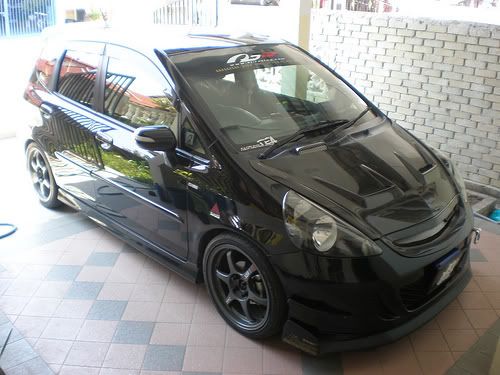
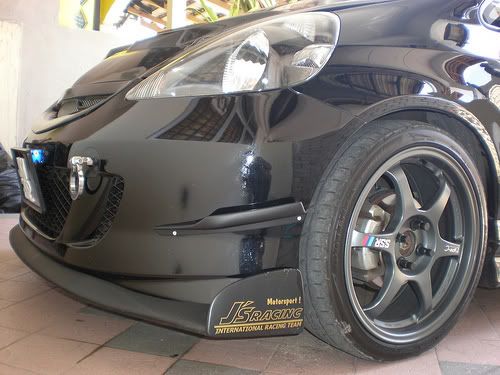
Brand: SSR
PCD: 100mm
Hole: 4
Color: Metal gun
* Owner brought brand new and price RM 7k
Contact : blitzs17@yahoo.com
Tuesday, May 27, 2008
Bush League TV
Place one stop informational web hub for low brow high-minded individuals and information for the average dude. It’s all about guy from smart-ass to dumb-ass and back. Them like the ladies, sports, gambling, video games, good music and hard laughs. The made funny videos, review about game, review about girls and sport.
Web show some a lot of funny videos and picture to give us to rate Sweet or Bush. When rate it. You can see at Scoreboard. Bush / Sweet
Them support weirdo and goofs and invite you to play along.
Here the video I like to you view about Game
Grand Theft Auto 4 Jump-a-THON!
28 Hour Game Review - Grand Theft Auto IV
24 Hour Game Review - Tom Clancy’s Rainbow Six Vegas 2
Video Bush League Sports
A Moment in Bush League Sports - The Bikini Babe Race
I hope you will enjoy it. Click here for direct link
Road Block And Speed Trap at LDP and Near Ldp
Red Dot Indicate the location that PDRM make a 'speed trap' at day time. Reminder speed at limit 90 km/h
block' at night. For Check up ID, license n Road Tax.
Saturday, May 24, 2008
Road Block At Dengkil
Yellow Dot Indicate the location that PDRM alway (almost every day)make a road block at Dengkil, Selangor. For Check up ID, license n Road Tax.
SnapBomB

I found it last couple of day at http://www.infektia.net/ & I read the article about it.
"SnapBomb - Get paid to blog? And I completely forgot to update you on how it went…
I got paid by them (over 100 dollars) last week actually! Since they only will pay you 60 days from the time you created your post, a lot of us got suspicious. And after 60 days, you probably forgot about the post/s you have written, like me. So no wonder I got surprised when I got an email from PayPal!
I haven’t logged in since I was done with the posts so I don’t know if there are any opportunities to take, and it seems like the site is down for maintenance at the moment so I can’t check."
It’s made me interested to know more about it. So I read about it and I happy with it. So I signed up with Snap bomb.
Here the link http://www.snapbomb.com/bloggers.html
Thursday, May 22, 2008
Honda Engine Code And Spec
Honda Engine Code & Spec
Engine Code Engine Configuration/ Capacity
C35A V6 SOHC/ 3.5 litre
C32A V6 SOHC/ 3.2 litre (first generation)
C32B V6 DOHC/ 3.2 litre (second generation)
C30A V6 DOHC/ 3.0 litre
C27A V6 SOHC/ 2.7 litre
J35A V6 SOHC/ 3.5 litre
J32A V6 SOHC/ 3.2 litre
J30A V6 SOHC/ 3.0 litre
F20B 4-cylinder DOHC/ 2.0 litre (second generation)
F20C 4-cylinder DOHC/ 2.0 litre (third generation)
K24A 4-cylinder DOHC/ 2.4 litre
K20A 4-cylinder DOHC/ 2.0 litre
H22A 4-cylinder DOHC/ 2.2 litre
B18A 4-cylinder DOHC/ 1.8 litre (first generation)
B16B 4-cylinder DOHC/ 1.8 litre (second generation)
B18C 4-cylinder DOHC/ 1.8 litre (third generation)
D17A 4-cylinder DOHC/ 1.7 litre
ZC 4-cylinder SOHC/ 1.6 litre
E07Z 3-cylinder SOHC/ 660cc
Engine Spec
Sixes
C32B 3.2 litre V6 DOHC VTEC (NSX) 206kW
C30A 3.0 litre V6 DOHC VTEC (NSX) 187 - 206kW
J35A 3.5 litre V6 SOHC i-VTEC 195kW
J32A 3.2 litre V6 SOHC i-VTEC 191kW
J30A 3.0 litre V6 SOHC i-VTEC 184kW
C35A 3.5 litre V6 SOHC 158kW
C32A 3.2 litre V6 SOHC 145kW
C27A 2.5 litre V6 SOHC 128kW
Fours
F20C 2.0 litre DOHC 184kW
K20A 2.0 litre DOHC 158 –62kW
B18C 1.8 litre DOHC 147kW
K24A 2.4 litre DOHC 147kW
F20B 2.0-litre DOHC 147kW
H22A 2.2 litre DOHC 142kW
B16B 1.6 litre DOHC 136kW
B18C 1.8 litre DOHC 125kW
B16A 1.6 litre DOHC 118kW
D17A 1.7 litre SOHC 96W
ZC 1.6 SOHC 9 5kW
Threes
E07Z 660cc SOHC Turbo 47kW
List of Toyota Engine Code
V12s | |
| 1GZ-FE 5.0 litre | 206kW |
V8s | |
| 3UZ-FE 4.3 litre | 206/210kW |
| 1UZ-FE 4.0 litre VVT-i | 206kW |
| 1UZ-FE 4.0 litre | 190kW |
| 2UZ-FE 4.7 litre | 170/173kW |
| 5V-EU 4.0 litre | 121kW |
Sixes | |
| 2JZ-GTE 3.0 litre twin turbo | 206kW |
| 1JZ-GTE 2.5 litre twin turbo/single turbo VVT-i | |
| 2JZ-GE 3.0 litre | 166kW |
| 1GR-FE 4.0 litre | 179kW |
| 7M-GTE 3.0 litre turbo | 173/179kW |
| 3MZ-FE 3.3 litre | 172kW |
| 1FZ-FE 4.5 litre | 165kW |
| 1MZ-FE 3.0 litre VVT-i | 158/162kW |
| 1G-GTE 2.0 litre twin turbo | 136 - 154kW |
| 1MZ-FE 3.0 litre | 145kW |
| 7M-GE 3.0 litre | 142kW |
| 3VZ-FE 3.0 litre | 139kW |
| 5VZ-FE 3.4 litre | 132kW |
| 1G-GZE 2.0 litre supercharged | 125kW |
Fours | |
| 3S-GTE 2.0 litre turbo | 136 - 191kW |
| 3S-GE 2.0 litre (11.5:1 CR) | 154kW |
| 2ZZ-GE 1.8-litre | 140/141kW |
| 3T-GTE 1.8 litre turbo | 125kW approx |
| 4A-GZE 1.6 litre supercharged | 123kW |
| 4A-E 1.6 litre 20-valve | 119kW |
| 2AZ-FE 2.4 litre | 115kW |
| 1AZ-FE 2.0 litre | 110kW |
| 1ZZ-FE 1.8 litre | 103kW |
| 4E-FTE 1.3 litre turbo | 100kW |
| 4A-GE 1.6 litre | 88/100kW |
| 1NZ-FE 1.5 litre | 80kW |
| 2T-TELU 1.3 litre turbo | 77kW |
Wednesday, May 21, 2008
Unlimited time tunnel
'Difficult is Worth Doing'
A place you practice skydiving at your suitable time.
Honda Philosophy -Respect for the individual. The Three Joys (buying, selling and creating)
| Dreams inspire us to create innovative products that enhance mobility and benefit society. To meet the particular needs of customers in different regions around the world, we base our sales networks, research & development centers and manufacturing facilities in each region. Furthermore, as a socially responsible corporate citizen, we strive to address important environmental and safety issues. |
Honda Accord 2008
News about the all-new 2008 Honda Accord has just been released. Apparently the sedan is now big enough to be classified as a large car by the EPA. And there is also a coupe version vying for attention.
2008 2009 honda accord sedan coupe
There are three basic engines available, including a 3.5L iVTEC V6 producing 273 hp and 250 lb-ft of torque. It also features a new Variable Cylinder Management system when ordered in the sedan that can power the vehicle on three, four or all six cylinders to achieve an excellent 19/29 mpg. The other two mills are a 2.4L inline-four producing 200 hp and 170 lb-ft, and another 2.4L producing 180 hp and 166 lb-ft. All models of the ‘08 Accord can be ordered with a five-speed automatic, while four-cylinder models can also be had with a 5-speed manual transmission, and the V6 Coupe can be optioned with a six-speed manual.
2008 2009 honda accord sedan coupe dubai saudi
The other two engines are a 2.4-litre inline-four producing 200 hp and 230 Nm, and yet another 2.4-litre producing 180 hp and 225 Nm.
2008 2009 honda accord sedan coupe dubai saudi
All models of the 2008 Accord can be had with a five-speed automatic, while four-cylinder models can also be had with a 5-speed manual transmission, and the V6 Coupe can be optioned with a six-speed manual.
2008 2009 honda accord sedan coupe dubai saudi
Trim levels include the LX and LX Premium (LX-P), EX and EX-L, and the EX V6, while the coupe is offered as the LX Sport (LX-S), EX, EX-L and EX V6.
2008 2009 honda accord sedan coupe dubai saudi
This segment sells itself largely based on safety, and the new Accord has it in spades. This will be the first time the entire Accord model range comes standard with four-wheel anti-lock disc brakes. Vehicle Stability Assist with traction control is also standard, along with six airbags.
2008 2009 honda accord sedan coupe dubai saudi
The styling of course is even safer than the safety features, and will appeal to its conservative target market. The coupe tries hard to be different, but it doesn’t do enough.
2008 2009 honda accord sedan coupe dubai saudi
That’s all you really need to know about Honda’s latest family hauler. Nothing unexpected or new, except for more efficient engines. Also, expect prices to be similar to the current model.
Intercooler Maths - Kiraan Intercooler
Intercooler Maths
Working out what an intercooler will do
When a turbo or supercharger compresses air, the air is heated. While this hot air can be fed straight into the intake of the engine, there are two disadvantages in taking this approach.
Firstly, warm air has less density than cool air - this means that it weighs less. It's important to know that it's the mass of air breathed by the engine that determines power, not the volume. So if the engine is being fed warm, high pressure air, the maximum power possible is significantly lower than if it is inhaling cold, high pressure air.
The second problem with an engine breathing warm air is that the likelihood of detonation is increased. Detonation is a process of unstable combustion, where the flame front does not move progressively through the combustion chamber. Instead, the air/fuel mixture explodes into action. When this occurs, damage to the pistons, rings or head can very quickly happen.
If the temperature of the air can be reduced following the turbo or supercharger, the engine will have the potential to safely develop a higher power output. Intercoolers are used to produce this temperature drop.
Intake Air Temperatures
How much hotter the air gets as it is being compressed depends on the pressure ratio (how much it is being compressed) and the efficiency of the compressor. This means that the theoretical outlet temperature can be calculated if three factors are known: the inlet air temperature, the compressor efficiency, and the pressure ratio.
Before this can be done, the temperatures and pressures need to be expressed in the right units. Firstly, temperatures need to be converted to Kelvin (K), a measurement of absolute temperature.
K =°C + 273.15
A temperature of 35°C is therefore the same as 308.15K (or 308K for our purposes).
Boost pressures also need to be converted to pressure ratios. Note that 1 Bar = 14.5 psi.
| Boost Pressure in Bar + 1 | |
| Pressure ratio = | ------------------------------------- |
| 1 |
A boost of 1.5 Bar therefore becomes a pressure ratio of 2.5.
Let's have a look at an example.
If the inlet air temperature to a turbo is 20 °C (293K) and the boost pressure is 1.1 Bar (pressure ratio = 2.1) the theoretical outlet temperature will be:
Theoretical outlet temp = 293 x (2.1)0.286
= 293 x 1.236
= 362K (89 °C)
This means that there is a temperature rise of 69 °C (89 ° - 20 °= 69 °).
However, this doesn't take into account that the compressor efficiency will be less than 100 per cent. If we assume a compressor efficiency of 70 per cent (typical for a good turbo):
| 69 ° | |
| Actual temp increase = | ------ |
| 0.7 | |
| = 98.6 °C |
This is a temperature increase of 98.6 ° which when added to the ambient temp of 20° means that the actual outlet temp will be:
20 + 98.6 = 118.6 °(119 °C when rounded)
While the theory is fine, there are a number of factors that affect the accuracy of the calculated figure. Firstly, it is difficult to accurately estimate the efficiency of the compressor. And even if such a figure is available, it doesn't necessarily apply to all the different airflows that the compressor is capable of producing. In other words, there will be some combinations of airflow and boost pressure where the compressor is working at peak efficiency - and other areas where it isn't. While a well-matched compressor should be at peak efficiency most of the time, in some situations it will be working at less than optimum efficiency. This will change the outlet air temperature, usually for the worse.
Secondly, the turbo- or supercharged car engine is not working under steady-state conditions. A typical forced induction road car might be on boost for only 5 per cent of the time, and even when it is on boost, it is perhaps for only 20 seconds at a stretch. (But higher in both aspects for turbo diesels.) In most petrol engine turbo cars, longer periods of high boost occur only when hill-climbing, towing or driving at maximum speed. While all of the engine systems should be designed with the full load capability in mind, in reality very few cars will ever experience this. This factor means that the heat-sink capability of the intake system must be considered.
If the inlet air temperature of the engine in cruise condition is 20 degrees C above ambient, then on a 25 degreeday the inlet air temp will be 45 degrees C. After 30 minutes or so of running, all of the different components of the intake system will have stabilised at around this temperature. If the engine then comes on boost and there is a sudden rise in the temp of the air being introduced to this system, the temperature of the turbo compressor cover (or blower housing), inlet duct, throttle body, plenum chamber, and inlet runners will all increase. These components increase in temp because they are removing heat from the intake air and so limit the magnitude of the initial rise in the actual intake air temperature. As a result, the infrequent short bursts of boost used in a typical road-driven forced-induction car often produce a lower initial intake air temperature than expected.
This doesn't mean that intercooling is not worthwhile (it certainly is) but that the theory of the temperature increase doesn't always match reality. However, taking a theoretical, calculated approach at least gives a general idea of the temperature increase that is likely to be experienced.
Air Density Changes
In the example above there was a temperature increase from 20 ° to 119°. But how does this temperature change affect the all-important density of the air? The density of air depends on two factors - its temperature and pressure. The drop in density due to increased temperature is directly proportional to the ratio of the temperatures, when they are expressed in Kelvin. So the drop in density of the air at 119 °C (392K) versus 20 °C (293K) is found by:
| 293 | |
| Density difference = | ----- |
| 392 | |
| = 0.75 |
In other words, the temperature increase would have caused a drop in density by 25 per cent, had the air still been at the same pressure. But of course its pressure is now higher because the turbo or supercharger has compressed it!
If the air pressure is doubled without a change in temperature, the density is doubled. To work out the effect of both the loss of density because of the temp rise and the increase in density because of boost pressure, the two factors are multiplied.
| Inlet Air Temp (K) | ||
| Increase in Air density = | -------------------------- | x pressure ratio |
| Outlet Air Temp (K) | ||
| 293 | ||
| = ------ x 2 = 1.49 | ||
| 392 |
In other words, the increase in density has been 49 per cent at 1 Bar boost with a compressor outlet air temperature of 119 °C. This means that, all things being equal, the engine can develop 49 per cent more power.
Intercooler Efficiency
An intercooler will do two things - it will lower the temperature of the intake air and at the same time cause a slight drop in boost pressure. The latter comes from the restriction to flow caused by the intercooler. Some restriction is unavoidable because the flow through an efficient intercooler core needs to be turbulent if a lot of the air is to come in contact with the heat exchanger surfaces. However, if the pressure drop is too high, power will suffer. A pressure drop of 1-2 psi can be considered acceptable if it is accompanied by good intercooler efficiency.
Intercooler efficiency is a measurement of how effective the intercooler is at reducing the inlet air temperature. If the intercooler reduces the temperature of the air exiting the compressor to ambient, the intercooler will be 100 per cent efficient. It will also be a bloody marvel, because no conventional intercooler can actually achieve this!
Intercooler efficiency is given by:
| Actual Temperature Drop | |
| Intercooler Efficiency = | --------------------------------------------------- |
| Maximum Possible Temperature Drop |
For example, if on a 20 °C day the outlet air temp of the turbo is 110 °C and the temperature of the air after it has passed through the intercooler is 45 °C then:
| 110 ° - 45 ° | |
| Intercooler Efficiency = | --------------- |
| 110 °- 20 ° | |
| 65° | |
| = ----- | |
| 90° | |
| = 0.72 (or 72 per cent) |
Final Calculations
Let's take an example that puts together all of the figures. You fit an intercooler that is 72 per cent efficient and has a pressure drop of 0.14 Bar (2 psi) to an engine running 1.5 Bar (22 psi) boost developed by a turbo compressor that is 70 per cent efficient. It's a 25 ° Celsius day.
Firstly, the theoretical compressor outlet air temp:
298K x (2.5 pressure ratio)0.286= 387K = 114 °C
114 °C - 25 ° aC = a temperature increase of 89 °C
| 89 °C | |
| ------------------------------- = 128°C temperature increase | |
| compressor efficiency |
128 °C temp increase + 25 °C ambient = 153 °C air temperature coming out of the turbo!
The maximum possible temperature decrease through an intercooler: 153 °C - 25 °C = 128 °C
An intercooler that is 72 per cent efficient will give an actual temperature drop of:
128 °C x 0.72 = 92 °C
A turbo outlet temp of 153 °C - 92 °C intercooler drop = actual engine inlet air temp of 61 °C.
Boost pressure was 1.5 Bar but with the pressure drop through the intercooler it becomes:
- 0.14 = 1.36 Bar.
| 1.36 + 1 | |
| ----------- = | a pressure ratio of 2.36 |
| 1 |
So with an intercooler we have a temp of 61 °C at a boost pressure ratio of 2.36, compared with a non-intercooled 153 °C at a pressure ratio of 2.5.
| 298K | ||
| Intercooled: | ------- | x 2.36 pressure ratio = 2.1 times non-turbo air density |
| 334K | ||
| 298K | ||
| Non-Intercooled: | -------- | x 2.5 pressure ratio = 1.75 times non-turbo air density |
| 426K |
If the engine developed 100kW (134hp) in naturally aspirated form, with 1.5 Bar (22 psi) boost it could develop a theoretical 175kW (235hp) without an intercooler and 210kW (281hp) with an intercooler. On this example, fitting the very big intercooler is good for a 20 per cent power gain. However, again reality intrudes - the picture is often even better than this. Any forced induction car seems to go disproportionately harder when the ambient temp is low - much more so than the physics suggest. The same applies to a car equipped with a very good intercooler - throttle response is superior and power markedly so.
Conclusion
The maths is straightforward and clearly shows that maximum intercooler efficiency matched with the lowest pressure drop will result in best power.
List of Mitsubishi Engines Code
Mitsubishi Orion Series (4G1x)
4G11 - 1244cc
4G12 - 1410cc
4G13 - 1298cc SOHC - Saga, Iswara, Wira, Satria
4G15 - 1468cc SOHC - Saga, Iswara, Wira, Satria
4G16 - 1198cc
Mitsubishi Saturn Series (4G3x)
4G32 - 1597cc SOHC 8 Valve - Galant
4G33 - 1439cc
4G36 - 1238cc
4G37 - 1755cc SOHC 8 Valve - Cordia
Mitsubishi Astron Series (4G5x)
4G52 - 1995cc
4G54 - 2555cc SOHC 8 Valve to suit 2WD/4WD Vehicles
Mitsubishi Sirius Series (4G6x)
4G61 - 1595cc DOHC 16 Valve (Turbo - Mirage)
4G62 - 1795cc SOHC 8 Valve to suit 2WD Vehicles
SOHC 8 Valve to suit 4WD Vehicles
4G63 - 1997cc SOHC 8 Valve to suit 2WD Vehicles - Perdana
SOHC 8 Valve to suit 4WD Vehicles
DOHC 16 Valve to suit 2WD Vehicles - Perdana
DOHC 16 Valve to suit 4WD Vehicles - EVO 1-7, VR4, VR4 RS
4G64 - 2350cc SOHC 8 Valve to suit 2WD/4WD Vehicles
DOHC 16 Valve
4G67 - 1836cc DOHC 16 valve - Mirage 1.8
Mitsubishi 4G9x Series
4G92 - 1597cc SOHC 16 Valve - Satria
DOHC 16 valve non-MIVEC
DOHC 16 valve MIVEC
4G93 - 1834cc SOHC 16 Valve - Lancer
DOHC 16 Valve (Turbo - GSR & Non Turbo - GTi, Putra)
Mitsubishi V6 Engines
6A10 - 1587cc V6 DOHC 24 valve - Lancer
6A12 - 1997cc V6 DOHC 24 valve non-MIVEC - FTO/eterna
6A12 - 1997cc V6 DOHC 24 Valve MIVEC - FTO
6A13 - 2498cc
6G72 - 2972cc V6 SOHC 12 Valve to suit 2WD and 4WD Vehicles
V6 SOHC 24 valve
V6 DOHC 24 Valve - 3000GT
6G73 - 2497cc
6G74 - 3497cc V6 SOHC 24 Valve
V6 DOHC 24 Valve non-MIVEC
V6 DOHC 24 Valve MIVEC
Tuesday, May 20, 2008
My Friends Ride - Aiman
Owner: Khair Razman Bin Haji Othman a.k.a Aiman
Model: Perodua Kancil EX850
Year: 2000
Engine: Daihatsu Mira L200
HKS Air filter
HKS SSQV BOV Latest Version
Transmisi auto convert to manual
Front and Rear L5 Brake Disc 13"
Sistem ABS - HITS
Rim Volk TE37 15" x 6" with Titanium Nuts Rally Art
Tayar Falken Azenis 165/50/15
RS*R mufler with 2" piping + downpipe
External: Complete Set Moderno Limited L200 with Carbon Fibre Hood
Side Skirt model Kancil 2003
Side mirror chrome autoflip L5
Cermin Cromax All Doors
Air press after market
Antenna Chrome Single Blade TRXX
Sunroof EG6
Front Mount I/Cooler Infinite with stainless steel
Internal: Seat L512
Moderno Console Gear
Stereng L5
4 Power Window Moderno
Dashboard L5 with 'burger'
Turbo Timer Auto Apexi
Boost & Exhaust Temp & Water Temp DEFI with control unit
Carpet MIRA
Seat Belt MIRA Parco Limited
ICE: Kenwood Double Din DPX4020
Restek Pre-amp
Audiovox 4 Channel Amplifier
Woofer 12" Top Fuel
6" Mid + 8" Rear JBL Speaker + For You Tweeter
Carrozeria Speaker with lamp
Colour Body: Pearl Orange Multiplex
Security System: Zero Alarm System
Stage 1



Stage 2

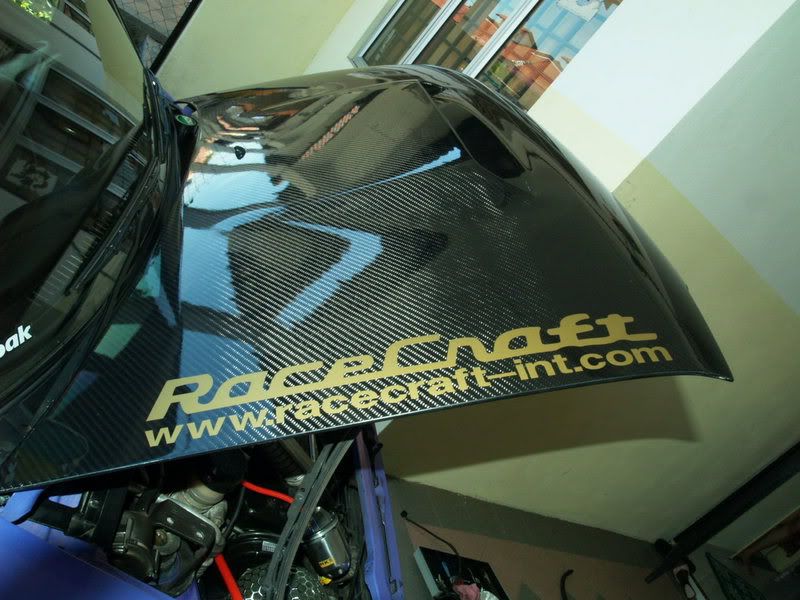
* Custom Made Fiber Carbon Hood From Race Craft
*Show Off his Defi gauges - Exhaust Temperature & Boost 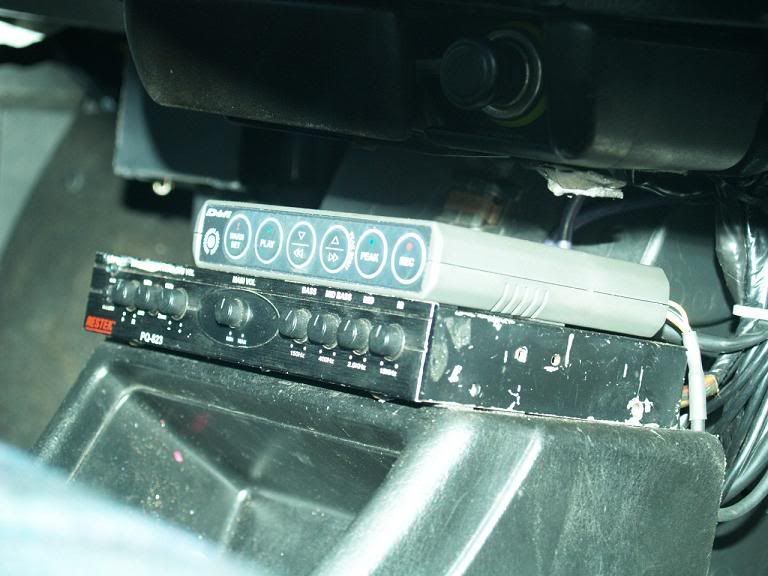
* Defi-Link Control Unit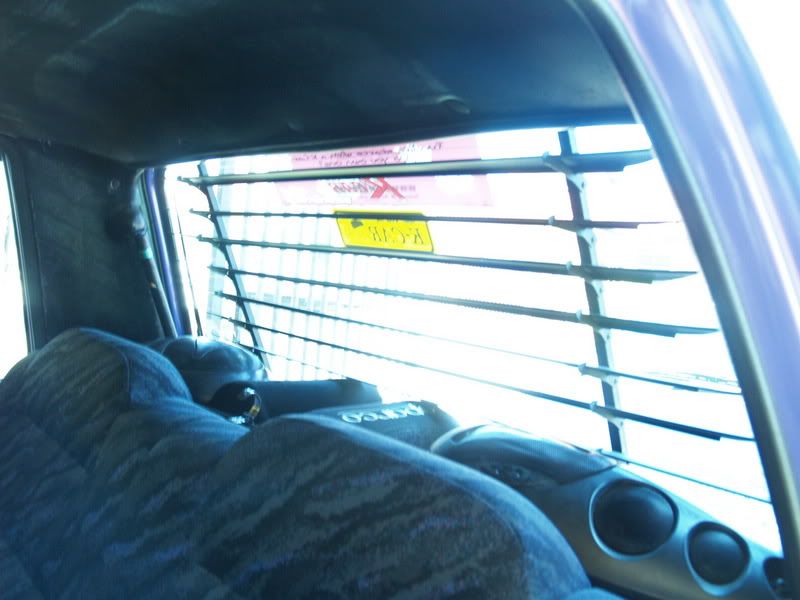

* Front Mount Inter cooler with Stainless Steel Pipe. Joint With Samco Hose
Stage 3
* Engine Bay Layout - HKS Air filter & HKS SSQV BOV
Stage 4
* Upgrade New Inter Cooler (Infinite ) & New Scoop
Stage 5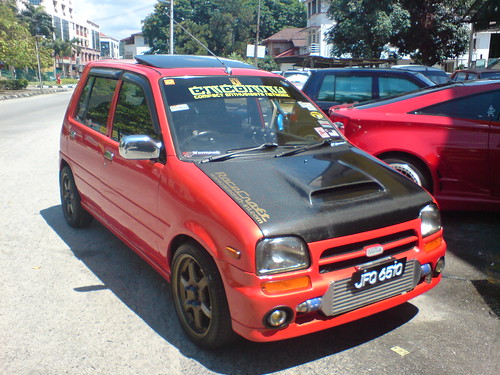

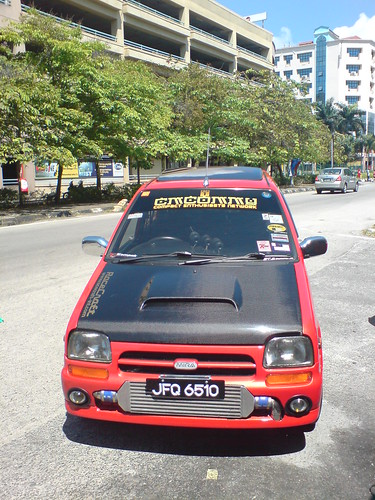
* Latest
Monday, May 19, 2008
SBD R01 2008 Video Sepang Battle Drag 2008 Round 1
Credit to - abdullah7353 (id you tube)
SEPANG DRAG BATTLE ROUND1 2008 Video 1
SEPANG DRAG BATTLE ROUND1 2008 Video 2
Sepang Battle Drag video on You Tube.
singapore skyline beaten by proton satria
Daihatsu that beat 1300bhp Skyline
anuar Motor Sport (AMS) Blue Satria
Sepang Drag 9 Seconds Satria GTI
Saturday, May 17, 2008
My Favorite Video On You Tube
Souped Up Thailand
7.940 second supra 1/4 mile drag records Thailand
7.654 Second Souped Up Thailand Record 2007
Friday, May 16, 2008
Part 8 - List Malaysia Auto Club / Senarai Kelab Kereta Malaysia
please report to me, if there are any error link or url.
120. Wira Owners Club
121. Wira Aeroback Performance Club
122. Wira Special Edition Community
123. Wish Club Malaysia
124. Xtrail Owner Club
please report to me, if there are any error link or url.
Part 7 - List Malaysia Auto Club / Senarai Kelab Kereta Malaysia
please report to me, if there are any error link or url.
103. Team Imperials (Proton Waja)
104. Team Kaitenaz
105. Team Matrix
106. Team Slipstream (Car Forum)
107. Team Street
108. Team Yakuza
109. The Auto Garage Group
110. Toyota Altis Club
111. Toyota Project S
112. Toyota Vios Club Malaysia
113. Tune E-fectz Enthusiast
114. Ultimate Driving Machine Owners
115. VIP Dream Club
116. VIP Style Society Malaysia
117. Volvo Owners Club of Malaysia
118. Waja Performance Club
119. Wira 1.8 DOCH LE Owners Club
please report to me, if there are any error link or url.
Part 6 - List Malaysia Auto Club / Senarai Kelab Kereta Malaysia
please report to me, if there are any error link or url.
86. RX8 Club Malaysia
87. Saga Iswara Club (S.I.C)
88. Saga Iswara Owner's Club (SIOC)
89. Sarawak Auto Forum
90. Satria GTi Club
91. Satria Neo Club
92. Satria Performance Owners Club
93. Satria Tuner Club
94. Savvy Owners Club (SAVOC)
95. Slip Stream
96. Subaru Club Malaysia
97. Sutera Club
98. Swift Club Malaysia
99. Tandem Assasin Tengku Djan
100. Team Eighth
101. Team ES (7th Gen Civic)
102. Team Hyundai Malaysia
please report to me, if there are any error link or url.
Part 5 - List Malaysia Auto Club / Senarai Kelab Kereta Malaysia
please report to me, if there are any error link or url.
69. MYVI Motor Motorsports Club
70. MYVI Owners Club
71. Nissan Motorsports Club
72. Perdana V-Sixers
73. Performance Carbs Forum
74. Perodua Owners (KAPMA)
75. Peugeot Club
76. Photokaki Forum
77. Picanto Club
78. Proton Mania Club
79. Putra Collective
80. Putra Enthusiast Group
81. Proton Satria Enthusiast
82. R3gister-Home to R3 Owners
83. R3gister Forum
84. Reckless Motorsport
85. Redline Club
please report to me, if there are any error link or url.
Part 4 - List Malaysia Auto Club / Senarai Kelab Kereta Malaysia
please report to me, if there are any error link or url.
52. K-Car Sport Enthusiast
53. Kia Car Club
54. Kia Optima Owners Club
55. Kia Spectra (SAECTRAN)
56. Kcar Life
57. L2TT Performance Group
58. Lancer GT Club
59. Malaysian Honda Civic Club
60. Malaysian Matrix Club
61. Mercedes Benz Club
62. Mini Owners Club Malaysia
63. Mitsubishi Airtrek Club
64. Mitsubishi Evolution Owners Club
65. Mitsubishi Galant VR-4 Enthusiast
66. Mitsubishi Lanser Owners Club
67. Motorsport NetworkPublish Post
68. MX5MY Club Malaysia
please report to me, if there are any error link or url.
Thursday, May 15, 2008
Part 3 - List Malaysia Auto Club / Senarai Kelab Kereta Malaysia
please report to me, if there are any error link or url.
34. Honda Civic 99 Spec
35. Honda Prelude Owner Club
36. Honda Stream Owners Club
37. Hypermax
38. Hypertune Online Gallery
39. Hyundai Accent Club of Malaysia
40. Hyundai Coupe Club
41. Italia Auto Club
42. Italian Car Club Forum
43. Japanese Sportscar Owners Club
44. JazzFit Friends Club
45. Kaizertweek Performance Club
47. Kenari & Kelisa Owner Club
48. Kenari Owners Club
49. Kenarianz Club
50. Kelab Kereta Kuantan
(Triple-K)
51. Killerbees
please report to me, if there are any error link or url.
Part 2 - List Malaysia Auto Club / Senarai Kelab Kereta Malaysia
please report to me, if there are any error link or url.
18. Citra Club Malaysia
19. Civic 7th Gen Owners Club
20. Chevrolet Club of Malaysia
21. Classic Celica Club
22. CSI (Club Saga Iswara)
23. Drag & Drift Club
24. Drift Enthusiast's Site
25. EP Motorsports
26.Ford Motor Enthusiasts Club (FOMEC)
27. Forum Group of Senawang
28. FTO Malaysia Owners Club
29. Gen2 Club
30. Geng Turbo
31. Getz Club Malaysia
32. Honda Accord Variants Owner Club
33. Honda Car Owners Club
34. Honda City Club
please report to me, if there are any error link or url.
Tuesday, May 6, 2008
Part 1 - List Malaysia Auto Club / Senarai Kelab Kereta Malaysia
please report to me, if there are any error link or url.
1. 4GTuner.com
2. 8th Generation Honda Civic Club
3. Ad Resort Club
4. Allan Phang
5. Angle D5 Drift Team
6. Aroc Malaysia
7. Audio Enthusiasts
8. Automotive Forum
(Sarawak Based)
9. Auto World
10. Avanva Club Malaysia
11. Avanza Network Malaysia
12. Aveo Xtreme Club
13. BMW Club Malaysia
14. BMW & Mercedes Enthusiasts
15. Caldina Club of Malaysia
16. Car Enthusiasts Heaven
17. Car Forum (Zero to Hundred)
please report to me, if there are any error link or url.
* * * * * * * * * * * * * * * * *
(These list had been taken from Hyper Tune Magazine)
* * * * * * * * * * * * * * * * *












